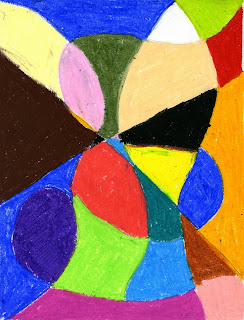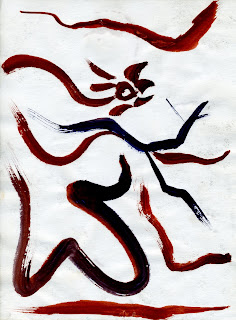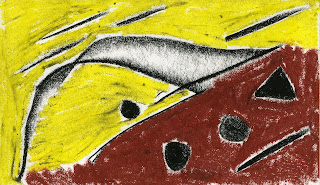
The River Woman captures the movement and essence of a flowing river. The clear, strong lines of the painting reveal the river’s constant, forward-moving water. Though the piece is simple, the viewer can easily see the river and its rippling current moving forward across the painting. The simple, black-and-white image of the river is nevertheless an effective and moving depiction of the river.
Yet this piece is not simply black-and-white; a streak of pink runs through the river’s water. Pink, a color associated with femininity, captures the feminine characteristics of the river. Nature is often considered to be a feminine force, and the river’s female essence links it with the rest of the natural world. The river appears mighty, its movement unstoppable and having great momentum, yet the river is feminine as well. A river nurtures life, for it is the home of many types of wildlife and provides a water source to others. Herein lies the river’s true strength, its feminine power to nurture and care for others.
©1998-2009 Claretta Taylor Webb. All Rights Reserved






























